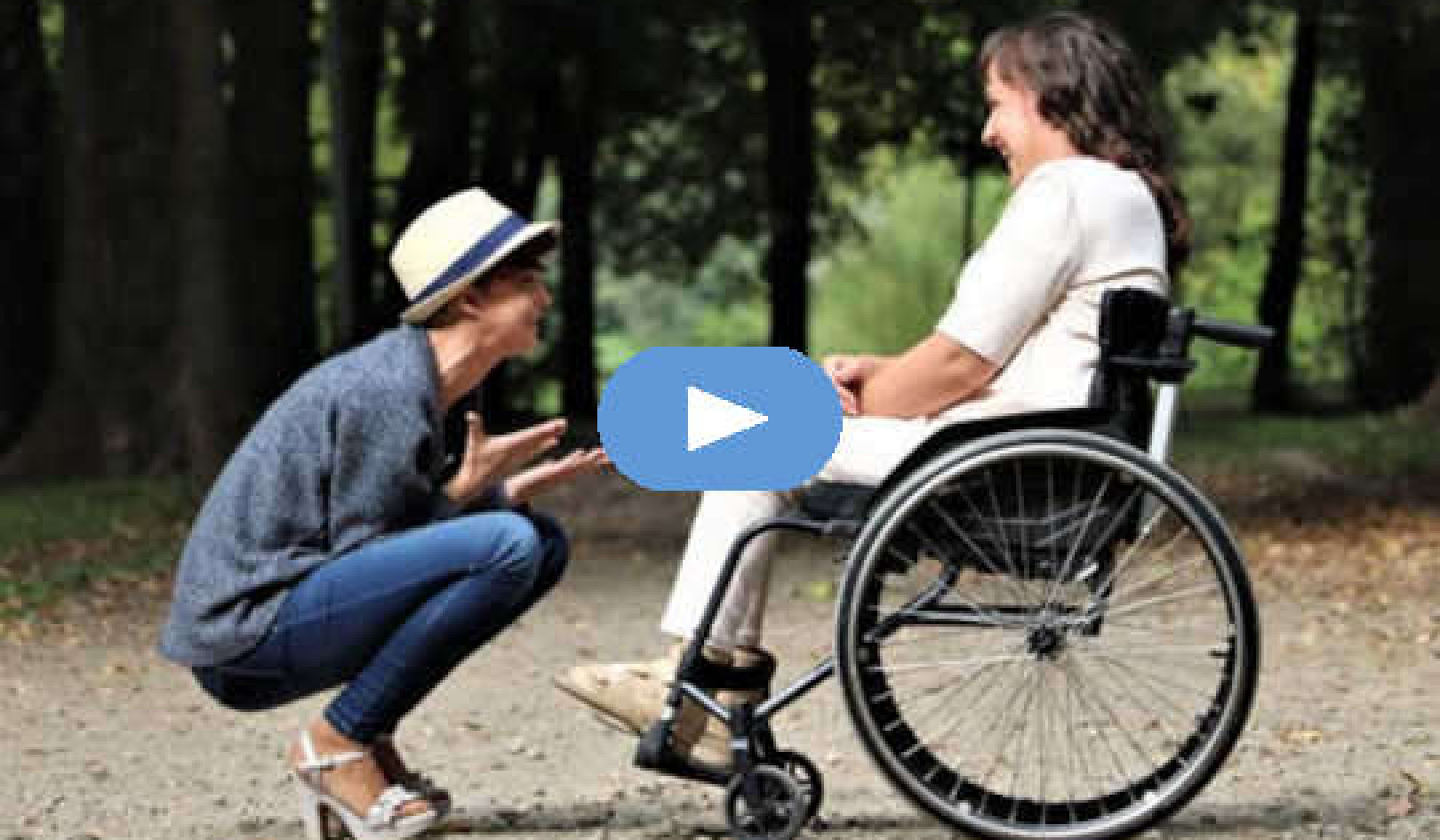
Be content with what you have, rejoice in the way things are. When you realize there is nothing lacking, the whole world belongs to you. — Lao Tzu
Here’s some wonderful advice for being miserable: Ignore all the good and decent things that surround you in the course of an ordinary day. Here’s more: Complain about the things you can’t change, and even complain about those things you can change. The list could go on — because we’ve all been there. I’ll never forget a talk I gave for my book Living Kindnessat a bookstore in the local mall. We had a nice, intimate audience of about twenty-five interested people.
I decided to open the talk with a question to get the pulse of the group. I asked them, “How many of you have felt grateful for something in your life already today?” It was just a tad past noon, so I figured everyone had enough time to notice something they could appreciate. Running water. The sun. Warm clothes. Being healthy enough to stand and walk. The availability of food — just steps away at the mall’s food court. The comfortable and stable chairs they were sitting on. Not a single hand went up. They weren’t being contrary — they just hadn’t noticed the ordinary, decent, good things that were right next to them.
It’s an easy trap to get into. With all the high expectations and levels of stimulation we experience, the only thing that seems to catch our attention is the newest and latest glittering object or dramatic news. It doesn’t help that we are wired to notice novelty, as well as being seduced into believing we can buy happiness through retail therapy.
I don’t blame anyone for this. This is the fishbowl that we’re swimming in. But if you really want to do a mind sweep of daily clutter and feel appreciation for what you have, there’s no better — nor less expensive — way than through locating joy. Or go to a soup kitchen or talk with those who are poor. Sometimes, to appreciate what we have, we simply need to wake up and look around.
Why Is Joy Sometimes Ignored or Misunderstood?
Let me make a couple of other points about joy and why it is sometimes ignored or misunderstood. First, to steep yourself in joy does not mean you are trying escape from the reality of life’s difficulties or hassles.
Just because life contains challenges or loss doesn’t mean that you can’t also — even simultaneously — shift your awareness and experience joy. This is the beautiful ambiguity of life. It is not a simple equation, like 1 + 1 = 2. Joy and suffering coexist, just as light contains all the colors of the rainbow. To be fully alive, we need to find the joy that is hidden in plain sight, right beside us.
Second, joy is not a guilty pleasure, something that means you are not being productive. After all, joy is not really productive, is it? And that’s the point. Joy actually counters the mechanistic view of life — that we measure ourselves by how much we produce and do, like a machine. Joy integrates the seemingly disparate parts of our life. With joy, it’s the very experience of living that is valued. In this context, even our work can be potentially joy-filled. Joy knits together all of our life into one seamless fabric.
Rejoicing and Celebrating Life in the Moment
The origin of the word joy stems from the word meaning “to rejoice,” which is all about how one plays and celebrates. While happiness is often measured by looking at various aspects of well-being and life satisfaction — some governments measure GNH, or Gross National Happiness, using factors such as health, time use, living standards, education, social vitality, and so on — joy is an uplifting, fleeting, moment-to-moment experience.
Happiness is a noun, whereas rejoicing is an action, a verb. Rejoicing is about participation in this moment. This begs the questions, How do you like to play? When was the last time you vigorously, without censorship, rejoiced and played?
Laughing Brings Joy and Healing
Laughing is a good example of rejoicing in the moment. Scientists have found that laughter does more than lift our moods. In the 1960s, Norman Cousins researched the value of laughter for physical health — first for his own health when he was confronted with a life-threatening illness. Cousins was told he only had six months to live, and his pain was so acute that he couldn’t sleep. Desperate to get some rest, he tried something that no one thought would help: a massive dose of laughter.
Cousins had a 35mm movie projector brought into his hospital room, and he projected funny films onto one wall. He soon discovered that thirty minutes of belly laughter provided him with up to two hours of anesthetic-free, pain-free sleep. (Later research supported this early claim.) This led to Cousins’s recovery and, ultimately, to his working at UCLA. Today, the Cousins Center for Psychoneuroimmunology continues to do groundbreaking work exploring the mind-body connection.
Scrubbing Stress Hormones From Your System
At the time Cousins applied laughter as a treatment, he didn’t understand how toxic stress hormones were being scrubbed from his system — or how his immune system was getting a powerful boost. Since that time, hundreds of clinical, peer-reviewed studies have demonstrated how the process works. One study, published in Alternative Therapies in Health and Medicine, investigated the effects of a humorous video on cancer patients. One group of cancer patients viewed the humorous video, while the control group watched a nonhumorous tourism video.
Researchers found a significant decrease in stress hormone levels for those who saw the humorous video. That matters because the stress hormone cortisol dampens the body’s defense system and even kills natural killer, or NK, cells. NK cells are immune cells that fight viruses and even some kinds of tumors. The cancer group that watched the humorous video actually benefited from a significant increase in NK cell activity. Finding this, the researchers concluded, “As low NK cell activity is linked to decreased disease resistance and increased morbidity in persons with cancer and HIV disease, laughter may be a useful cognitive-behavioral intervention.”
Laughter has also been shown to increase the levels of human growth hormone and pain-reducing endorphins. No wonder laughter feels so good. It also bonds us with others and is a social way of playing and rejoicing. Laughter and other forms of joy are effective at overcoming negative emotions. For example, have you ever been joyful and angry at the same time? Have you ever felt grateful and been envious at the same time? These are incompatible feelings. You can’t feel gratitude for someone while at the same time feeling jealous or envious. Just as rumination and negative clutter can block joy, so too can joy block negative clutter.
Three Lifestyle Tools
These three Lifestyle Tools will help you home in on finding joy. Once you begin noticing joy in the course of your day, these practices will become more and more frequent — without your even trying. Even during those times when you might previously have found yourself irritated or annoyed, you’ll find yourself looking around to take a snapshot of joy instead. How marvelous!
Experiment with the following practices to see what helps you to take those daily snapshots of joy.
1. Reflect on Gratitude
One useful way to find joy is through noticing gratitude or appreciating the things in your life. This is surprisingly easy to do. Gratitude very much depends on where you place your attention. You have a choice: you can either focus on what is missing in your life, or you can focus on what is present. Here are three types of gratitude to reflect on:
Daily Basic and Personal Gifts
Roof over your head
Transportation
Sleep
Sunlight
Health
Smiling
Running water
Furniture
Chairs
Food
Coffee/tea
Trees
Walking
Your five senses
Electricity
A job
Clothing
Silence
Daily Relationship Gifts
Friends
Family
Caregivers
Conversation
Kindness
Giving
Receiving
Closeness
Laughter
Colleagues
Supporters
Sharing
Spiritual friends
Pets
Compassion
Celebrations
Shared meals
Cooperation
Daily Paradoxical Gifts
Appreciating a “paradoxical gift” means feeling joy or gratitude for something you wish wasn’t in your life. For example, if you came down with a cold or flu that kept you from going into the office, you could feel gratitude for how it forced you to slow down, think about taking better care of yourself, and get some much-needed sleep. Someone in a workshop said she was paradoxically grateful for losing her wallet because so many people were kind and helpful to her as a result of the incident.
One client I worked with was paradoxically grateful for the relationship loss of her best friend because it forced her to go out and meet new people — and she met a new best friend with whom she had more in common. Paradoxical gratitude illustrates that life is not an either-or proposition. As a wise sage once said, “Pray for what you already have in your life, and you’ll never be disappointed.”
To practice this, think about situations in your life right now that are difficult, and see if you can find the bright, silver lining. What paradoxical gratitude or joy is waiting for you?
2. Find a Joy Quote That Speaks to You
For some, being inspired by words and those we admire can help us find snapshots of joy. Use one of the quotes below — or find one of your own — that inspires you to take snapshots of joy.
Carry your joy quote with you — in your purse, wallet, or smart-phone — so you can look at it throughout the day and get centered on joy.
3. The GLAD Snapshot Practice
GLAD is an acronym I developed for finding joy and balance. It works by paying attention to certain positive aspects of life that are around us all the time, but which frequently go unnoticed. Sound easy? It is. The acronym stands for gratitude, learning, accomplishment, and delight. Each represents a joy snapshot that you can take.
To practice this daily, use your phone or an index card at the end of the day to write down and save your GLAD experiences. Share these with others, and at the end of the week, reflect on how many joy snapshots you found.
- Gratitude: Take a snapshot of something you’re thankful for today.
- Learning: Take a snapshot of something you learned about yourself today, such as noticing an insight or wisdom that you possess.
- Accomplishment: Take a snapshot of something you accomplished today, even if it was only a tiny step forward on a long-term goal. We mistakenly believe that accomplishments have to be supersized, but some of the best accomplishments are ordinary acts of self-care or giving to another.
- Delight: Take a snapshot of anything that made you laugh, smile, or feel joy today. This can be a thing of beauty, a chirping bird, a flower, a funny joke, a smile, your favorite color, and so on.
Which of these joy practices resonates with you the most?
Anytime you can share your joy practice with another, or ask someone what brings them joy or gratitude, you are creating a circle of joy in your life. What are some ways that you might use these practices with your family or friends?
©2016 by Donald Altman. Used with permission of
New World Library, Novato, CA. www.newworldlibrary.com
Article Source
 Clearing Emotional Clutter: Mindfulness Practices for Letting Go of What's Blocking Your Fulfillment and Transformation
Clearing Emotional Clutter: Mindfulness Practices for Letting Go of What's Blocking Your Fulfillment and Transformation
by Donald Altman.
Click here for more info and/or to order this book.
About the Author
 Donald Altman, MA, LPC, is a psychotherapist, a former Buddhist monk, and the award-winning author of several books, including One-Minute Mindfulness, The Mindfulness Toolbox, and The Mindfulness Code. He conducts mindful living and mindful eating workshops and retreats and trains mental health therapists and business people to use mindfulness as a tool for optimizing health and fulfillment. Visit his website http://www.mindfulpractices.com.
Donald Altman, MA, LPC, is a psychotherapist, a former Buddhist monk, and the award-winning author of several books, including One-Minute Mindfulness, The Mindfulness Toolbox, and The Mindfulness Code. He conducts mindful living and mindful eating workshops and retreats and trains mental health therapists and business people to use mindfulness as a tool for optimizing health and fulfillment. Visit his website http://www.mindfulpractices.com.




























